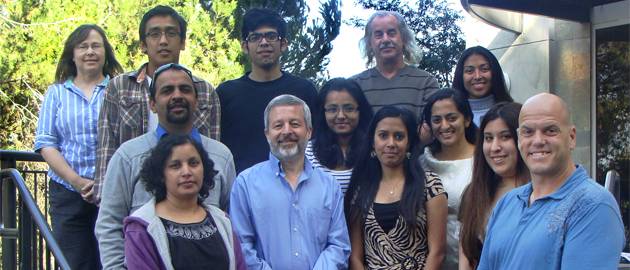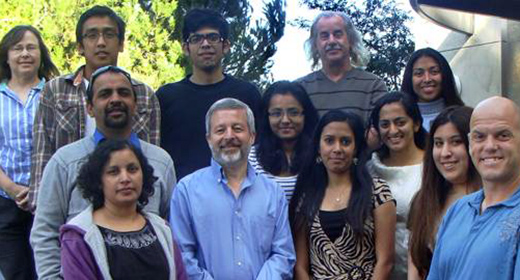
By: SDSU News Center
On the wings of the tiny fruit fly, Sanford Bernstein, has advanced his prolific research career.
To Bernstein, an SDSU professor of biology, the fruit fly is much more than a bothersome pest. It is perhaps the key to unlocking new treatments for human muscle and cardiac diseases.
His work has earned him the 2012 Albert W. Johnson University Research Lectureship, an honor awarded annually to an SDSU faculty member for outstanding achievement in research and scholarship.
His lecture, titled “Learning to Fly: Understanding the Basis of Muscle Function and Disease,” was presented on March 16 at 3 p.m. in Room 201 of the Arts and Letters building.
Emerging research
Bernstein began studying fruit flies in an advanced high school biology class, where he tested the effect of artificial sweetener on the insect. As a graduate student, he became interested in fruit fly muscle. The professor who served as Bernstein’s mentor was a pioneer in culturing fruit fly muscle cells at a time when molecular biology and newly developed recombinant DNA technology were emerging as intense topics of research.
Since his graduate school and post-doc days, Bernstein’s work has focused primarily on the motor function—or myosin protein—of fruit fly muscle.
How does this research apply to human musculature and disease? The research is based on understanding the structure and function of the myosin protein and how that affects muscle structure and contraction. These principles can be applied to humans with the goal of treating skeletal muscle disease and forms of heart disease caused by mutations in human myosin proteins.
Organizations such as the National Institutes of Health, the Muscular Dystrophy Association and the American Heart Association have funded Bernstein’s work for more than 30 years.
Bernstein’s biological research is one of many ways SDSU faculty are leading innovation and discovery, a key initiative of The Campaign for SDSU. With a unique focus on the teacher-scholar model, SDSU attracts researchers interested in solving the world’s most pressing problems, while showing students how to provide future solutions. Learn more about how SDSU leads innovation and discovery, and how you can help.
An early success
One of his early successes was the publication of an article in the prestigious journal Nature on RNA splicing as it applied to his fruit fly and myosin research.
“At that time, the process [of alternative RNA splicing] was just being understood,” said Bernstein. “The idea was new—to make a single RNA and cut it up in many different ways, resulting in the production of multiple forms of the myosin protein from a single gene.”
This work led to many of Bernstein’s recent publications, which look at the different structural and functional properties of the various myosin forms. Working with his laboratory group and collaborators from around the world, Bernstein has studied genetically altered flies expressing engineered forms of the myosin protein. The reseaarchers have gained insights into how the variants affect protein biochemistry, muscle structure and muscle contraction.
More recently, Bernstein and crew have used the fruit fly system to study myosin mutations known to cause human muscle and heart disease. They are attempting to suppress the muscle defects using both drug and genetic therapies, which eventually may prove useful for treatment of afflicted patients.
Valued mentor
Bernstein admits he has faced obstacles in his research and skepticism from colleagues, who question how research on an invertebrate can translate to humans. He maintains that this research constitutes the building blocks necessary to take the findings to the next level.
“Testing on the fruit fly has benefits,” Bernstein said. “The fly is a useful organism from a genetic standpoint, and it has a short lifespan. It is much simpler to research and doesn’t get into the realm of animal rights issues.”
As a teacher on campus, Bernstein is particularly proud of his involvement with the NIH-funded Initiative for Maximizing Student Diversity program at SDSU. Through the program, faculty members mentor underrepresented students interested in pursuing advanced degrees in the sciences.
“SDSU is unique because we offer more opportunities than many other research institutions for faculty to play a role in shaping programs and departments, defining academic direction and hiring colleagues,” Bernstein said.

